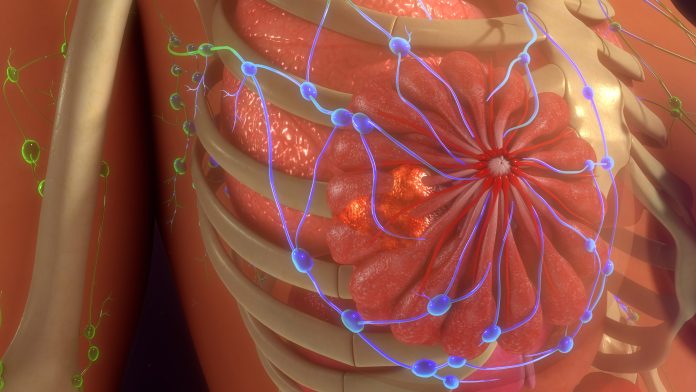
About 12 percent of recurrent ductal carcinoma in situ (DCIS) breast tumors are new primary lesions, unrelated to the original cancer, according to a new sequencing-based study. The researchers also found that variations in the TP53 gene were detected frequently in recurrences related to the primary DCIS lesion, but were not common in cases that don’t recur, or in those unrelated to the primary tumor.
“DCIS is a precancerous lesion that recurs in approximately 25 percent of patients, and half of these recurrences are invasive cancer with potential life-threatening consequences,” said Tanjina Kader, a postdoctoral researcher at the Peter MacCallum Cancer Centre in Melbourne, who presented their study this week at the American Association of Cancer Research (AACR) meeting in New Orleans.
According to Kader, it is assumed that all DCIS recurrences are related to the primary tumor. However, it has never been proven that all secondary tumors occurring in the same breast (ipsilateral) are directly related to the primary. “Knowing how common new primary tumors are will help us determine whether or not a tumor biomarker can be used to predict the chance of an ipsilateral breast tumor, because such a biomarker might not be effective in predicting new, unrelated tumors.”
In this study, Kader and colleagues assembled 65 pairs of matched primary DCIS and recurrence cases to explore their genetic changes, with the goal of understanding how often a recurrence is a new tumor, as this information might affect patient care. The study also included a set of 29 nonrecurrent DCIS cases treated with wide local excision.
The researchers performed DNA sequencing on each pair to obtain information on mutations and changes in gene copy number. They then used multiple statistical approaches to analyze the sequencing data and perform phylogenetic analyses of the tumor samples. This allowed them to establish whether the primary DCIS and the recurrent tumors shared cancer-driving genetic events and were therefore derived from a common ancestor cell.
“This is similar to building a family tree of the tumors based on the genetic events,” said Kader. “We can estimate how distantly related the primary DCIS and recurrence pairs are to each other and to a potential original ancestor cell and we can track how the tumor pairs have evolved over time.”
The results revealed that while the majority of recurrent cases were clonal (derived from a common ancestor cell and sharing the same genetic events of the original tumor), 12 percent of recurrent tumors where new primary lesions were unrelated to the primary malignancy.
“These findings can influence how patients are managed in the clinic,” commented Kader. “For example, the occurrence of a new primary lesion in the same patient suggests a high-risk breast environment in which new tumors may develop over the years. Therefore, such patients would be candidates for preventative breast removal surgery even if the tumor is small, and they might be referred to genetic testing to ascertain whether they have any genetic predisposition.”
“Data from the 12 percent of patients in our cohort who developed new, independent primary tumors raised the question of whether using these genetic biomarkers for prediction of recurrence is a good idea,” said Kader. “The fact that these patients did not have one of the genetic events that are more common in recurring DCIS would suggest that their risk was low, leading to undertreatment.”











